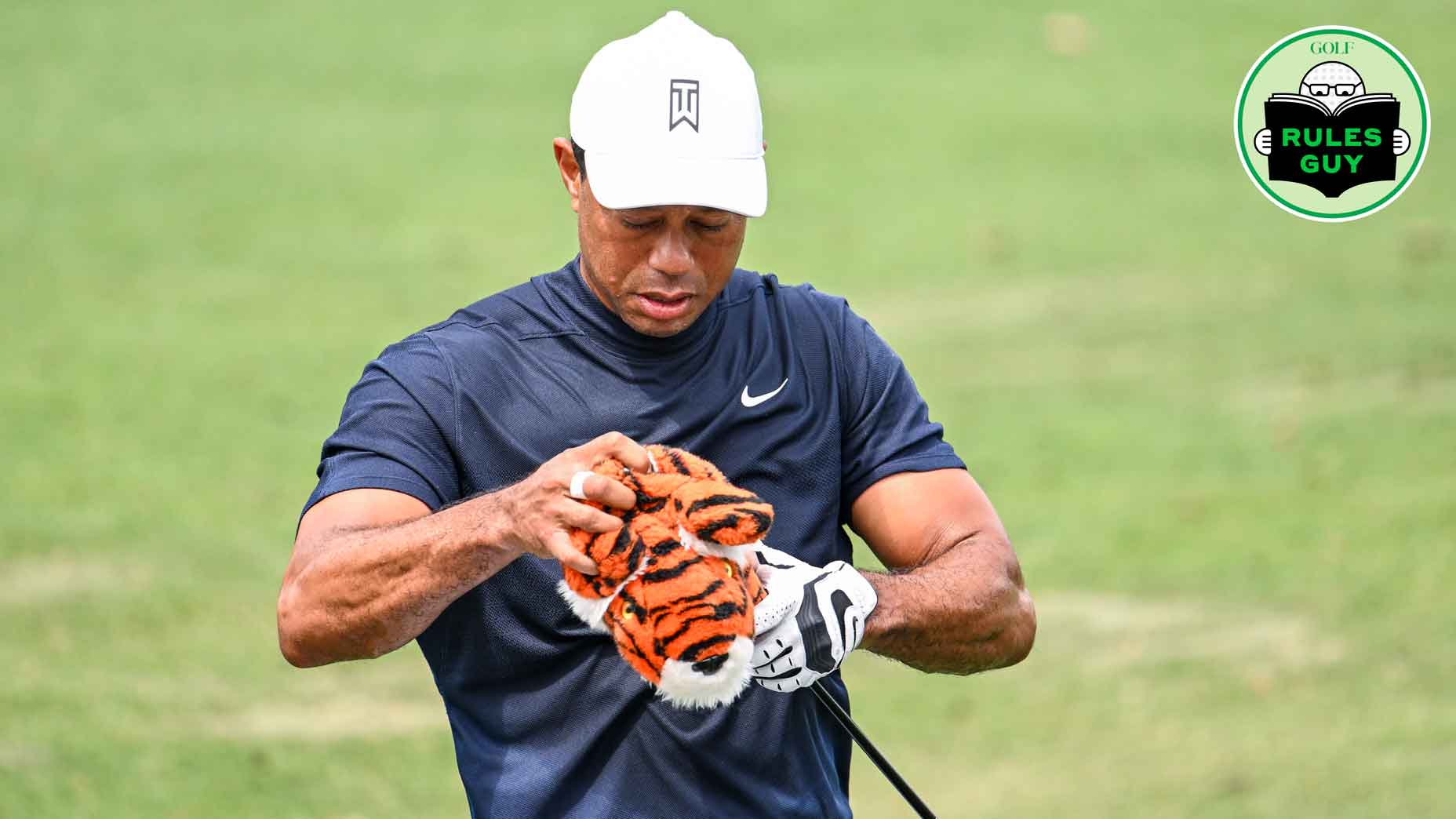
GOLF Top 100 Teacher Jon Tattersall shares data showing the differences in strengths and weaknesses between a 5- and 13-handicap golfer.
Getty Images
Welcome to Play Smart, a regular GOLF.com game-improvement column that will help you play smarter, better golf.
Having a golf handicap is important for a lot of reasons. From keeping key stats during your rounds to highlighting certain areas you must work on the most, understanding where you are as a player today will only help you as you continue to improve.
But one thing I always find interesting is what a better handicap player does compared to a player like myself, a mid-handicapper with a 13 index.
For instance, anytime I play with my buddies who are really good at golf — between a 2 and 5 handicap — I don’t necessarily notice anything they do tremendously better than me. Sure, there’s the occasional long-ball hitter who can bomb the driver, but, overall, they misshit shots just like all of us.
Of course, the scorecard doesn’t lie, so these dudes are doing a few things better than me. But what?
To help understand the differences between a 5 and 13 handicap, I tapped GOLF Top 100 Teacher Jon Tattersall, who was able to provide some cold hard stats from Arccos to show the strengths and weakness of each handicap level — and where the gap is between each.
Data reveals differences between two golf handicap levels
So where does a player with a lower golf handicap have an advantage over a mid or higher handicapper? According to the Arccos data provided from Tattersall, it’s several areas. But we’ll start with off the tee — which is a major key and makes all the other parts of the game easier. (We’ll explain.)
“Swinging faster is key,” Tattersall told me. “But any improvement in speed must be focused on centered contact. Most amateurs trying to increase club speed only work their body harder, and don’t increase their arm or hand speed. They also have no concept of slowing the handle of the club, which enables the clubhead to speed up.”
The data Tattersall provided (seen below) further highlights his suggestions.

Jon Tattersall
“Looking at the data, it’s further evidence that driving for show and putting for dough is wrong at every level for golfers,” Tattersall added.
So how can a mid-handicap player like myself go about making the massive leap from a 13 closer to a 5 index? Tattersall suggests working on the following.
1. Focus on better ball-striking
Ball-striking is where the focus needs to be — and it’s much more attainable than many mid-handicappers imagine.
Looking at the data, we can see that the 5 index is about 10% longer off the tee and 3% straighter (this is a little misleading given that the 10% increase in distance would potentially mean more off-line shots). So I’d say that the 5 index is more than 10% better off the tee than the 13 index.
Takeaways: Optimizing your driver is the key to improving scores. This means avoiding hitting it into a penalty or recovery situation.
2. The second shot can make all the difference
The approach into the greens is where the biggest gain in strokes is made. But again, it’s easier to hit more greens in regulation from closer to the green no matter how your approach play is.
Looking at the stats, the 5 index hits 17% more GIR (8.6 greens vs. 5.6 greens).
Takeaways: Too many golfers, even at the highest level, try to be perfect in their approach shots. They often aim too aggressively, either hitting to the corners of the green or not hitting it hard enough — and landing on the front edge of the putting surface.
My goal for all players is to raise their GIR number before trying to hit the ball closer with any club. Focus on contact first, and, as a result, distance control will ultimately follow.
3. Make up strokes around the greens
Around the greens, a 5 index is only gaining 0.9 shots relative to a 13 index. So this is important, but not a game-changer.
The PGA Tour average scrambling percentage for all shots around the green is about 58.5%. So GIR is even king on the PGA Tour, where GIR average is around 13 per round (on harder courses), or about 65%.
Takeaways: Improve your short game techniques, and learn to hit one or two shots well. This means having a baseline for pitching distance (about 30 yards), and working off that for other shots.
Although they look sexy, avoid hitting high, floating pitch shots. They’re too difficult for amateur players and should rarely be used.
Finally, don’t chip, but instead pitch everything. This makes the short game simple and pitching techniques can trickle into full swing improvements.
4. Better putting equals better scores
Putting shows a significant difference in strokes gained, with the 5 index gaining 2.1 strokes over the 13 handicap.
Takeaways: Too many mid-handicappers want to try and instantly make more putts, but this is wrong. The key is to leave your second putt closer to the hole — ideally for a tap in.
On the PGA Tour, a 3-foot putt is almost a guaranteed make, so amateurs need to work on putts from this range and in. I see too many amateurs obsessing over the line and not enough on their putting distance control.
Game Golf KZN GPS Shot Tracker
$219.99
GameGolf KZN is Golf’s Most Powerful & Accurate GPS Shot Tracker, designed to help you shoot lower scores. We track every shot, yardage and club hit, even giving you recommendations as you play. Our sensors allow for automatic shot detection to play with absolute confidence and freedom. GameGolf Membership Includes access to Smart Caddie (AI), GPS Rangefinder, Strokes Gained Analytics, Performance Dashboard, Benchmarks KZN system KZN Smart Hub Medallion, 14 Ultralight Smart Sensors + Accessories.
As part of your purchase of the KZN device, you will receive one year FREE Membership to the GameGolf Platform. The membership is renewed within the GameGolf app.
View Product











